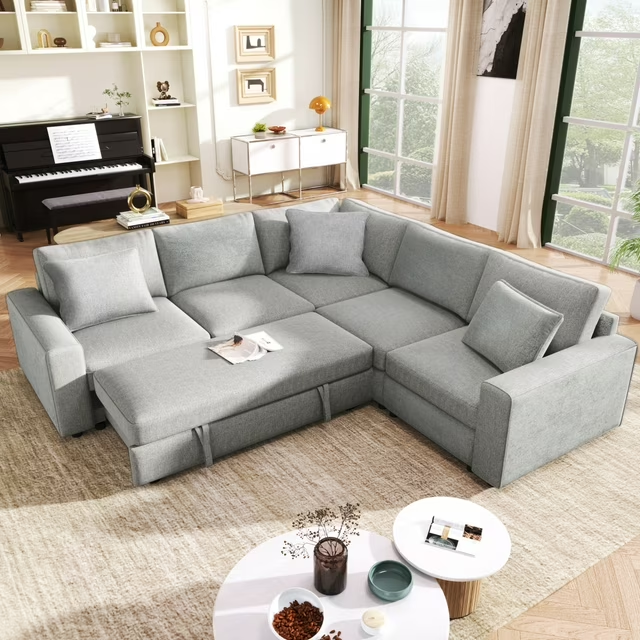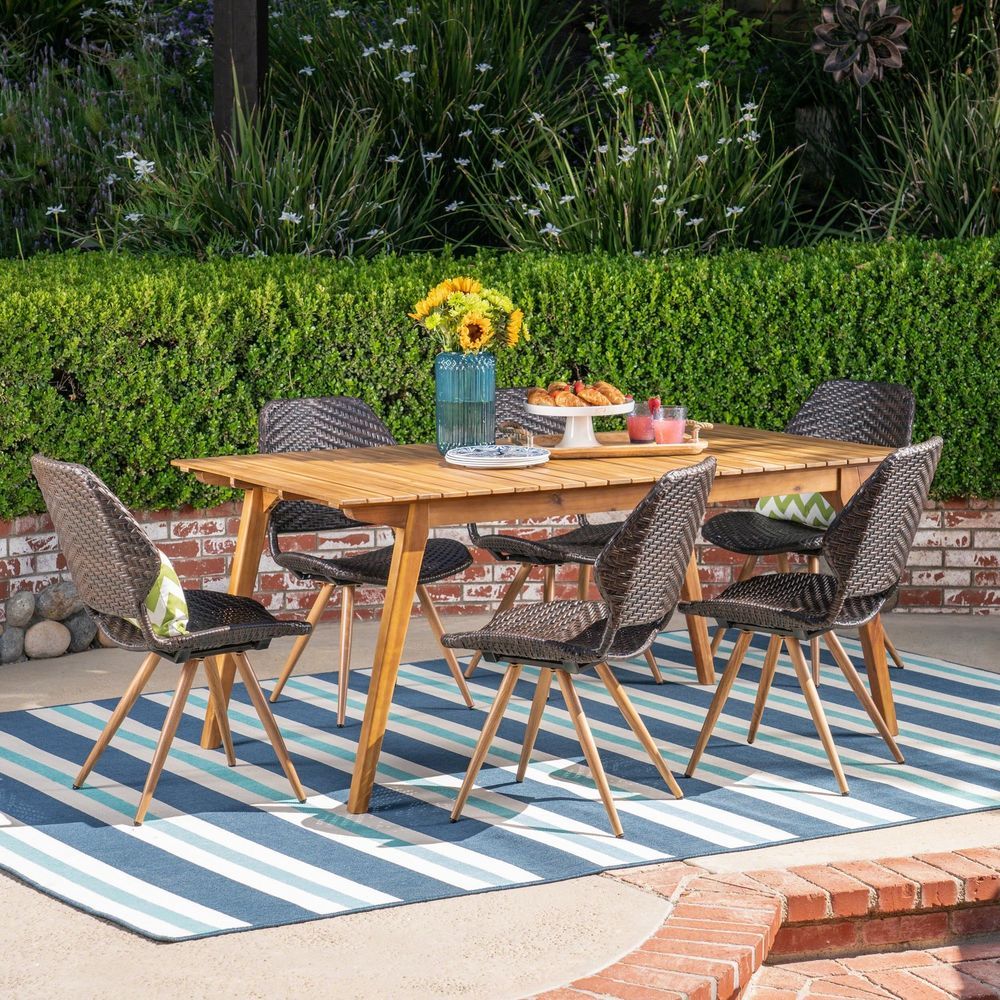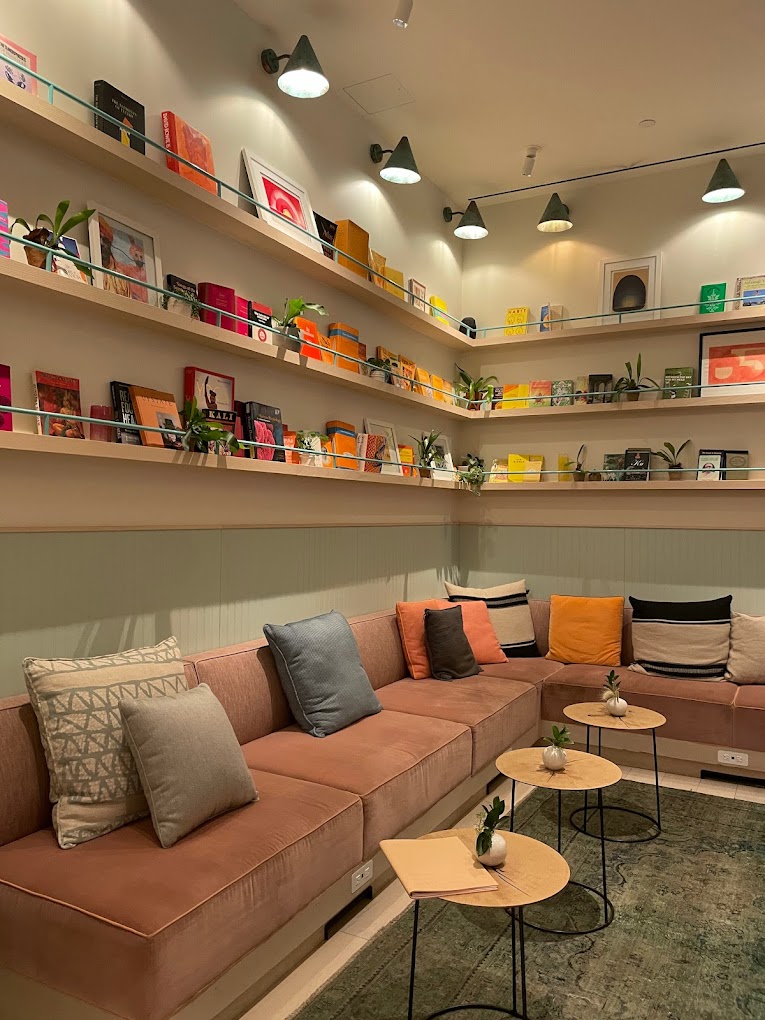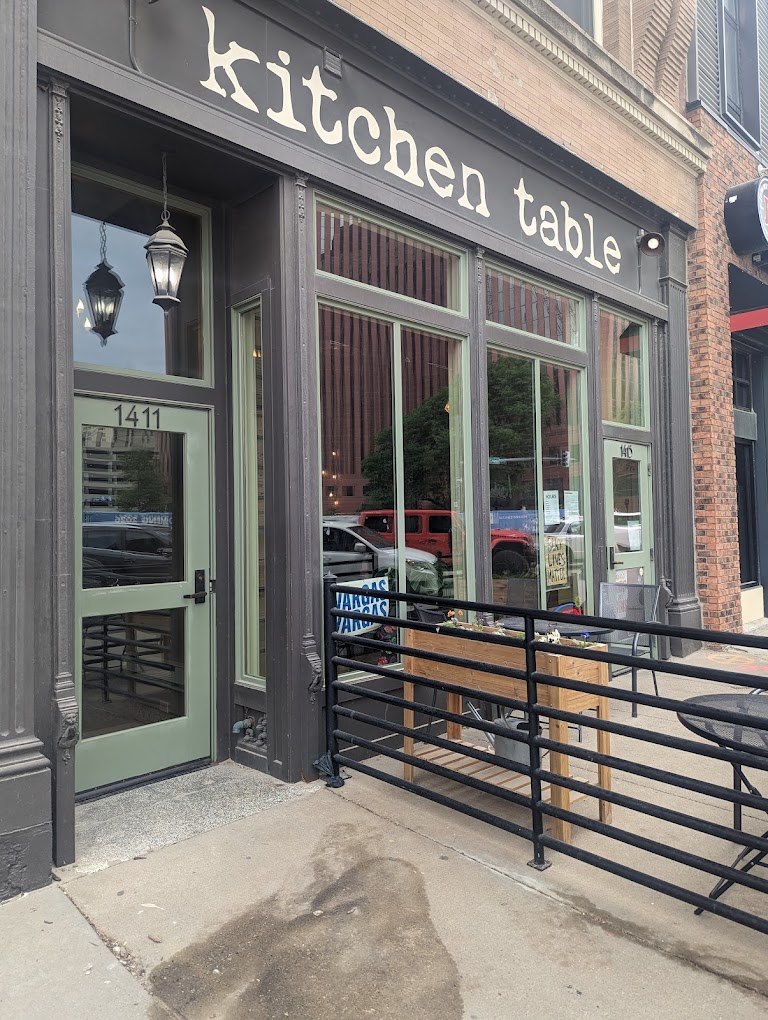Choosing the perfect sized rug is key to pulling together an inviting outdoor dining space. The rug should be large enough to define and anchor the seating area, while not impeding traffic flow around the perimeter. It comes down to carefully balancing proportions and allowing adequate clearance for foot traffic and chair movements.
This guide will cover how to determine the ideal rug size for your outdoor dining setup. We’ll look at measuring tips, size recommendations for standard table dimensions, optimal materials for outdoor rugs, and how to select a style that complements your patio decor.

Why Size Matters for Outdoor Dining Rugs
A properly sized area rug can make or break an outdoor dining space. One that’s too small will look lost and feel insubstantial when you’re walking around the table. On the other hand, an oversized rug can become a tripping hazard if people catch their feet on the edges.
The right proportions also contribute to the cohesiveness of the space. A rug that extends just far enough beyond the table visually defines the dining footprint. This creates a welcoming island for gathering around meals and conversations.
Allowing an appropriate border around the edges also makes it easier to pull out chairs and accommodate foot traffic. The rug should enhance the space, not become an obstacle.

Measuring Your Outdoor Dining Space
When preparing to buy an outdoor area rug, taking measurements is the most important starting point. You need accurate dimensions of both your dining table and the patio or deck space it occupies.
Begin by measuring the length and width of the outdoor dining space itself. Note any existing structures such as built-in benches or planters that may impact rug placement. Also account for access points like steps or gates leading onto the patio.
Next, measure your outdoor dining table including the full span with any leaf extensions. Round tables should be measured across the diameter. For square and rectangular tables, note the precise length and width.
If your outdoor furniture is still in storage, refer back to the specifications from the manufacturer. Some key standard outdoor dining table dimensions are:
- 4-6 seat table: 48″ x 72″
- 6-8 seat table: 60″ x 72″
- 8-10 seat table: 72″ x 72″
- 10-12 seat table: 96″ x 48″
With the room and table measurements in hand, you’re ready to determine the optimal rug size.
Calculating the Right Rug Size
As a general guideline, your outdoor dining rug should measure 24-36 inches longer and wider than the table on all sides. But this can vary based on your specific layout and spatial restrictions.
Here are some typical-recommended rug sizes for standard rectangular table dimensions:
- 4-6 seat table (48″ x 72″): 8′ x 10′ rug
- 6-8 seat table (60″ x 72″): 9′ x 12′ rug
- 8-10 seat table (72″ x 72″): 10′ x 12′ rug
- 10-12 seat table (96″ x 48″): 11′ x 13′ rug
For round tables up to 48″ diameter, a 6′ to 8′ round or octagonal rug works well. Larger 60″-72″ diameter tables can accommodate an 8′ to 10′ round rug.
With square tables, go for a rectangular rug shape that’s 1.5 to 2 times longer than the table sides. For example, a 52″ square table would pair nicely with a 6′ x 9′ or 8′ x 10′ rectangular rug.
If your table is situated against a wall or structural border, the rug only needs to extend 24-36 inches from the three open sides. But leave more clearance in high traffic areas so people aren’t tripping over the edges as they move around the space.
Material Considerations for Outdoor Rugs
Rugs used outdoors have to stand up to the elements including sun, rain, dirt, and moisture. So outdoor dining rugs need to be meticulously constructed from durable, weather-resistant materials.
Synthetic Fibers
Polypropylene is the most popular and affordable go-to fiber for outdoor rugs. It’s colorfast, stain-resistant, and does not absorb moisture. Polyester and nylon are other good synthetic options.
Natural Fibers
Sisal, seagrass, jute, and coir are made from plants and natural materials. Though more prone to mildew and fading than synthetics, these fibers add organic texture.
Weaves and Piles
Flat weave, low-pile, or patterned indoor/outdoor rugs hide dirt better than plush high-pile carpets. Tightly woven fabric backing provides stability on patio surfaces.
Backings
Non-slip rubber backing prevents rugs from shifting on tile, concrete, or decking. Rug pads also help stabilize placement and provide cushioning.
Treated Fabric
Look for rugs made with materials treated to be water, stain, and UV resistant. Binding and edges should be tightly secured and reinforced for durability.
Style Considerations for Outdoor Dining Areas
Beyond practical factors, also pick a rug that complements your outdoor furniture and overall patio decor.
- Tonal solids in neutral shades of navy, tan, gray, or orange add simple definition to the space.
- Bold patterns like global motifs, Southwest prints, or modern geometrics make the rug a focal point.
- Distressed solids in natural jute or woven textures fit casual spaces.
- Whimsical themes like tropical florals or nautical motifs inject character.
The rug should tie the outdoor dining arrangement together and establish a visual anchor. Measure carefully, mind the proportions, and choose quality materials made to withstand the outdoors. With the right sized and styled rug, your patio dining area will feel welcoming for dining, drinks, and conversation.










